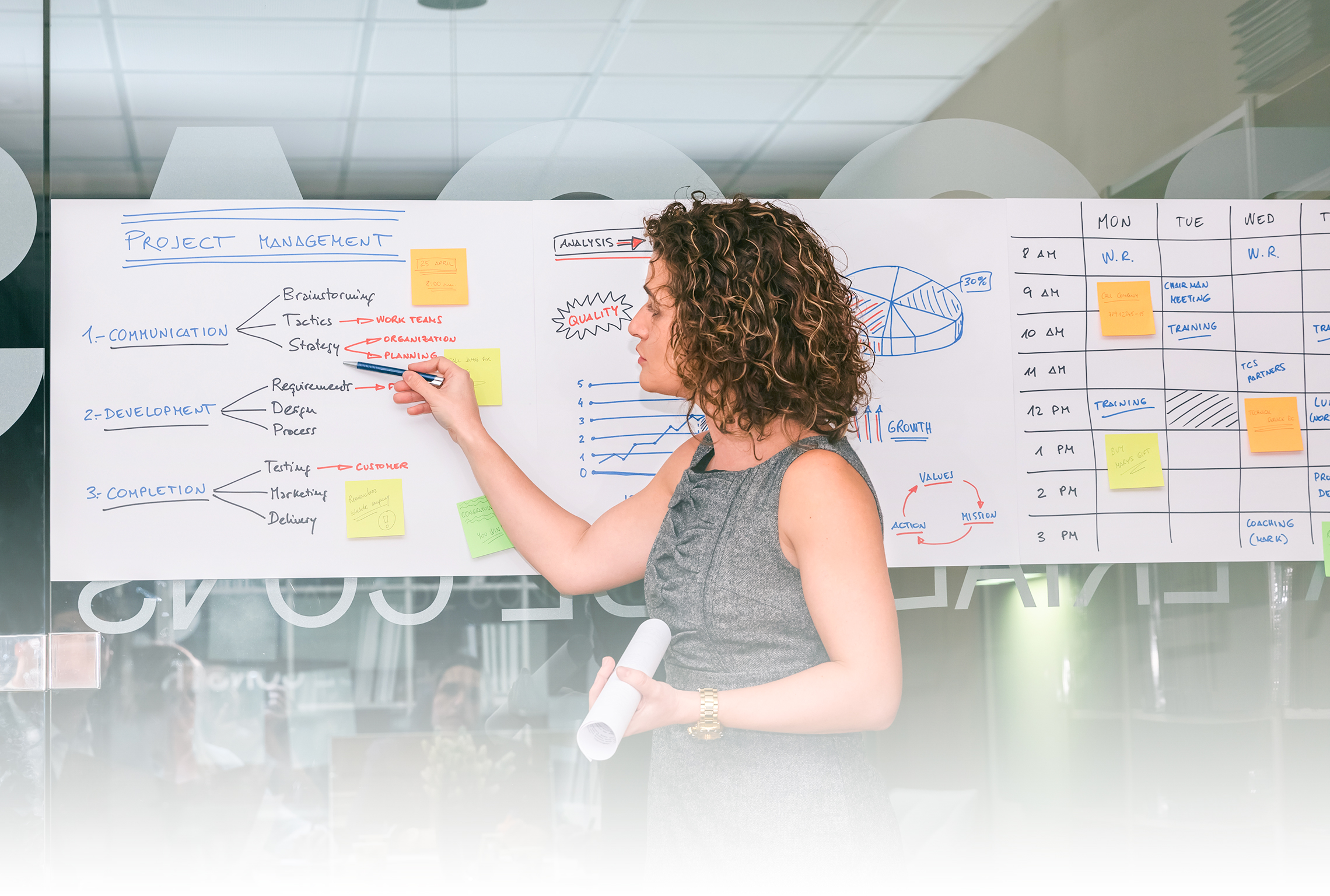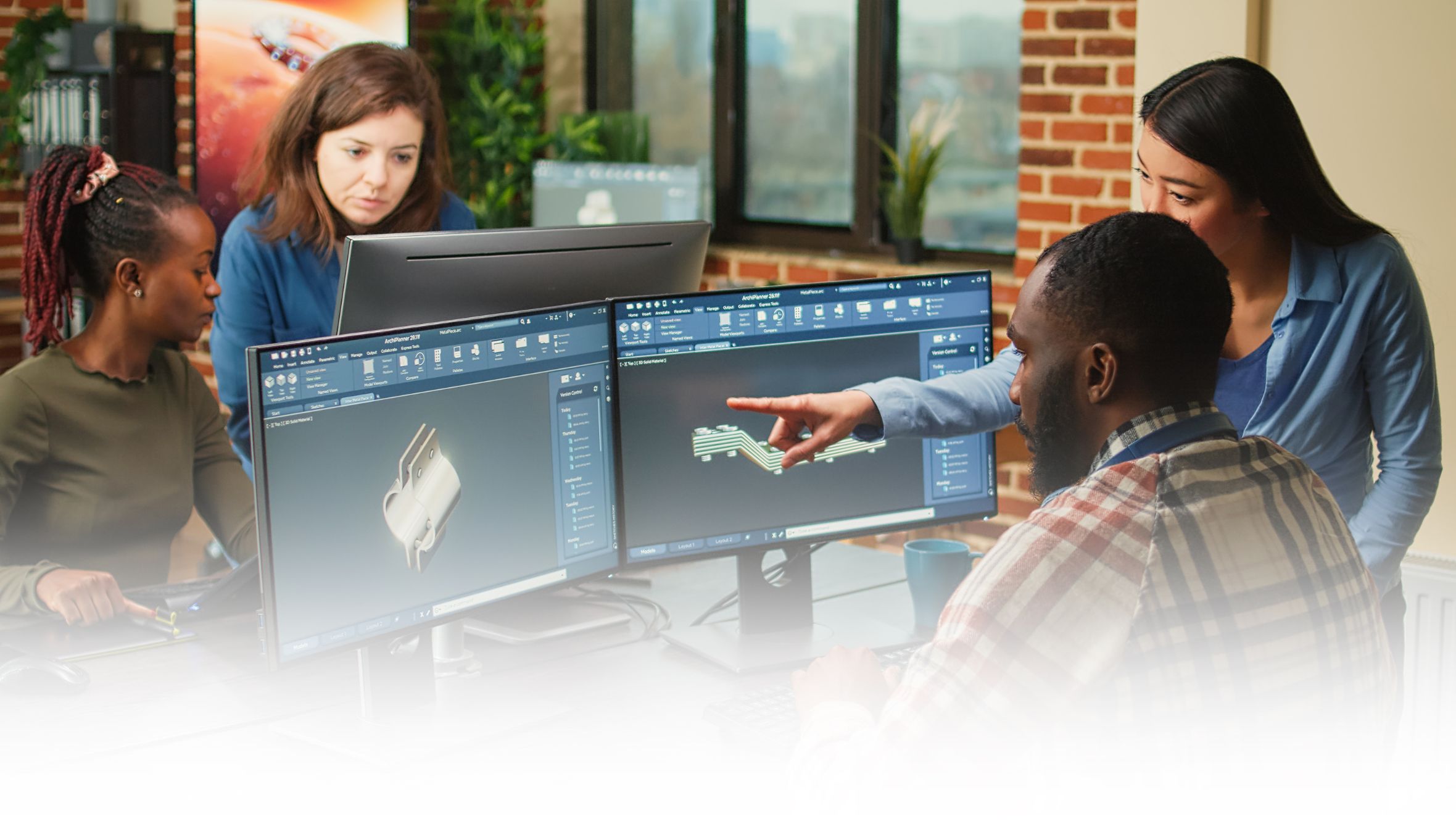Innovative Recruitment Meets Human-Centred Design: A Game-Changing Approach to Hiring
Candidates are becoming more selective and demanding, it is crucial for organisations to keep up with this movement.
Recruitment
February 9, 2023
9 minutes read

“”
Human-centred design is a subset of design thinking, a problem-solving approach that aims to innovate and create more efficient products and services employing a user-centric approach to design.
Recruitment is a crucial part of any organisation’s success, and innovation is key to staying ahead in the game. In today’s ever-changing business landscape, recruiters need to be at the forefront of new ideas and methods to attract and retain the best talent.
The concept of innovative recruitment has emerged as a response to the changes occurring in the job market and new technological developments, taking on different approaches to how this innovation can be achieved.
Human-centred design is becoming more relevant, showing us how the latest technologies and strategies can create a more efficient, effective, and fulfilling recruitment experience for both recruiters and candidates alike. By embracing innovative recruitment, recruiters can stay ahead of the curve, streamline processes, and ultimately find the right fit for their organisation.
What is Human Centred Design (HCD)?
HCD is a design tactic that focuses on needs, wants, and limitations of the end user of a product or service, rather than taking on the perspective of the manufacturer or the marketer. The foundation for human-centred design is analysing and understanding user behaviour in order to create solutions that are personalised to the user’s needs.
In its essence, HCD is a subset of design thinking, a process that is meant to encourage creativity and generate new and innovative ideas. As such, it is often associated with design innovation, that places a greater emphasis on the human aspect of problem solving.
Like other design thinking approaches, HCD employs a user-centric methodology, aimed at creating solutions that are both functional and efficient, and improve the user’s experience.
Why is human-centred design a helpful tool for innovative recruitment?
Human-centred design can work with recruitment innovation in two fronts. Firstly, it is a valuable tool in the talent acquisition process, for example when it comes to attracting candidates during the job search, but even during the recruitment process, it can create a better candidate experience.
On the second hand, HCD guidelines are very helpful, and when employed by recruiters and hiring managers, they can become a distinctive factor among other innovative recruitment approaches.
Attracting candidates:
Design innovation can be a key factor when attracting top talent to an organisation. Candidates are often drawn to companies that show innovation and forward-thinking approaches in their design, which might transpire to other company aspects. Furthermore, it helps companies differentiate themselves from their competitors.
Improving candidate experience:
A well-designed hiring process should cultivate a positive candidate experience. By using design principles to create a user-friendly and intuitive recruitment process, organisations can make it easier for candidates to apply, track their progress, and communicate with other stakeholders. This can be helpful in guaranteeing candidate satisfaction and improve the overall perception of the organisation as an employer.
Optimising the hiring process:
Design innovation can help organisations optimize their hiring process, whilst streamlining it. Design thinking is in its core a problem solving process that can be used to identify constrictions and inadequacies, which can help organisations find ways to improve efficiency and reduce the time and resources required to fill open positions.
Enhancing the employer brand:
The hiring process is often the first point of contact between a company and its employee to be. It can have a significant impact on their perception of the organisation as an employer. Innovative hiring processes that are optimised for the candidate experience, help a company enhance their employer brand and improve their ability to attract and retain young talent.
Improving the quality of hires:
By targeting the hiring process using design innovation, organisations increase the chances of successful hires. Feedback is the most powerful tool to refine and improve processes, human-centred design is no exception. By gathering feedback from all stakeholders involved, designers and HR representatives can improve their processes, allowing for an easier identification of the most qualifies candidates.
How can organisations use design thinking principles to proportionate a good candidate experience beyond design?
Innovation in recruitment should be seen, before all else, in creating hiring processes that are easy to navigate. It is crucial to identify what can be more appealing to candidates.
This entails drafting job descriptions that are clear and concise; using online tools and resources that make the candidate’s experience easier, for example during the application process and when consulting their application status. Moreover, it is interesting to see how the user-centric principles used in design thinking might be applied by recruiters when approaching a candidate, such as:
Empathise: Understanding the needs, wants, and limitations of the candidate when applying or during the pre-application process. You can only know your target by gathering data through research, observation, and interaction. In other words, you must get to know who you are communicating to.
Define: Identify the problem or challenge that needs to be addressed and define it in the most clear and concise way possible. Determine what can be done to create a better experience for the candidate.
Ideate: Generate potential solutions through brainstorming and collaborating. Are there new technologies, process improvements, or other innovative ideas that can be applied to the recruitment process?
Prototype: Develop low-fidelity prototypes of possible solutions to test and refine. This might involve experimenting with a new candidate portal, for example.
Test: The prototypes should be tested with candidates and there should be a gathering of information, to improve and inform the next iteration.
Beyond innovative recruitment is there a space for a problem-solving approach, such as design thinking, in a human resources strategy?
Human-centred design, as well as design thinking principles can have a significant role in a company’s human resources strategy. This is true in the hiring process, by enhancing the candidate experience and creating a strong employer brand.
However, we must remember that the recruitment process, while being the first stage of an HR strategy, as it lays the foundation for a company’s workforce, is only one aspect of a comprehensive human resources strategy. So beyond hiring managers, every HR staff should be aware of the importance of innovation.
Can companies apply the key-notions of HCD to the majority of their HR strategies? Certainly. Firstly, by applying said principles when job advertising, and during recruitment process, and carrying them through the onboarding stage, employee engagement initiatives, performance management, evaluation, etc.
Innovation-driven human resources strategies can improve the candidate experience, along with increase employee satisfaction, retention, and productivity.
Key-takeways:
Human-centred design is a subset of design thinking, a problem-solving approach that aims to innovate and create more efficient products and services employing a user-centric approach to design.
The principles used by design thinking in general, and human-centred design more specifically, can be extremely beneficial for organisation’s recruitment processes. Recruitment processes are taking on a more innovative approach, in order to keep up with a constantly evolving and ever-changing job market.
Candidates are becoming more selective and demanding, it is crucial for organisations to keep up with this movement. How can this be achieved? There are five key-steps: Empathise, Define, Ideate, Prototype, and Test.
How is this beneficial?
From the organisation’s perspective, it helps to better target the hiring process, by clearly stating the company’s goals, as well as taking into consideration specific skills and attributes that are required to meet such goals.
From the candidate experience, it’s about personalising the process. Identifying needs and requirements. Making the hiring process more personalised and tailored to candidates can help categorize the types of roles and responsibilities that are most appealing to each individual, while also allowing the organisations that are more appealing to them standout more easily.







